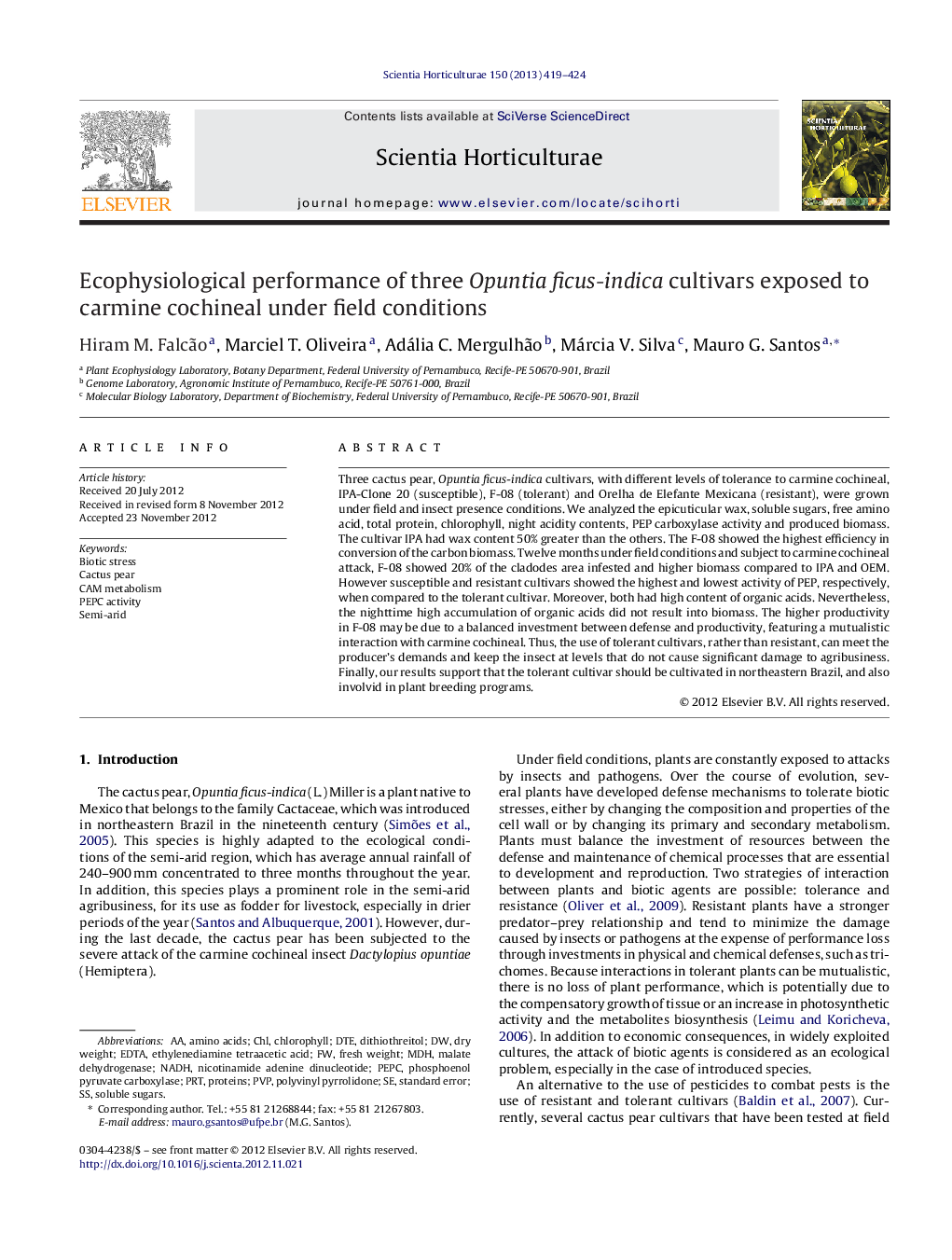| Article ID | Journal | Published Year | Pages | File Type |
|---|---|---|---|---|
| 4567300 | Scientia Horticulturae | 2013 | 6 Pages |
Three cactus pear, Opuntia ficus-indica cultivars, with different levels of tolerance to carmine cochineal, IPA-Clone 20 (susceptible), F-08 (tolerant) and Orelha de Elefante Mexicana (resistant), were grown under field and insect presence conditions. We analyzed the epicuticular wax, soluble sugars, free amino acid, total protein, chlorophyll, night acidity contents, PEP carboxylase activity and produced biomass. The cultivar IPA had wax content 50% greater than the others. The F-08 showed the highest efficiency in conversion of the carbon biomass. Twelve months under field conditions and subject to carmine cochineal attack, F-08 showed 20% of the cladodes area infested and higher biomass compared to IPA and OEM. However susceptible and resistant cultivars showed the highest and lowest activity of PEP, respectively, when compared to the tolerant cultivar. Moreover, both had high content of organic acids. Nevertheless, the nighttime high accumulation of organic acids did not result into biomass. The higher productivity in F-08 may be due to a balanced investment between defense and productivity, featuring a mutualistic interaction with carmine cochineal. Thus, the use of tolerant cultivars, rather than resistant, can meet the producer's demands and keep the insect at levels that do not cause significant damage to agribusiness. Finally, our results support that the tolerant cultivar should be cultivated in northeastern Brazil, and also involvid in plant breeding programs.
► Evaluating cactus pear cultivars susceptible, tolerant and resistant to cochineal carmine under field conditions. ► The tolerant cultivar showed the highest biomass. ► The susceptible cultivar has the highest PEC activity but the lowest biomass production as the resistant cultivar.
